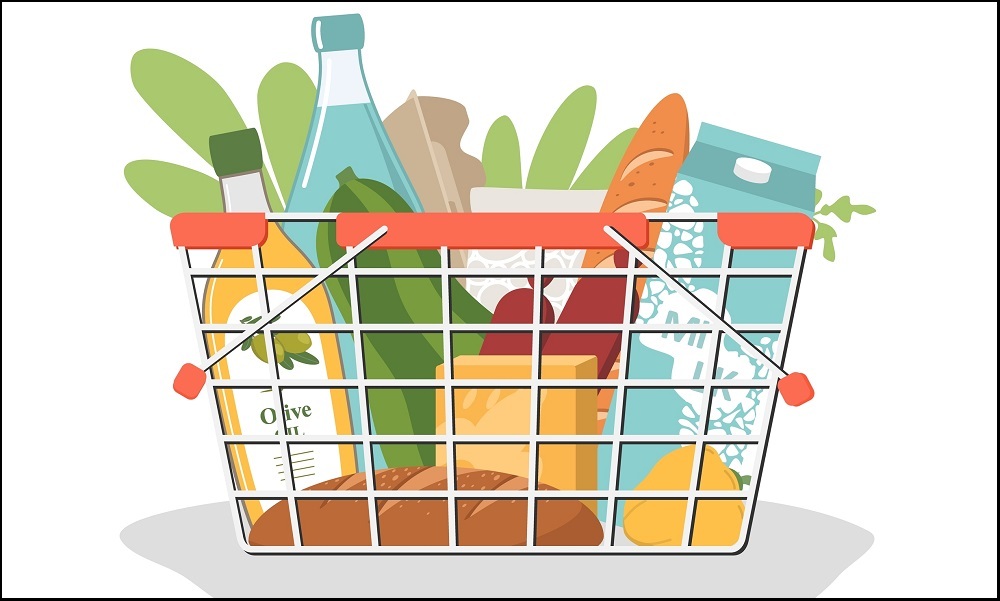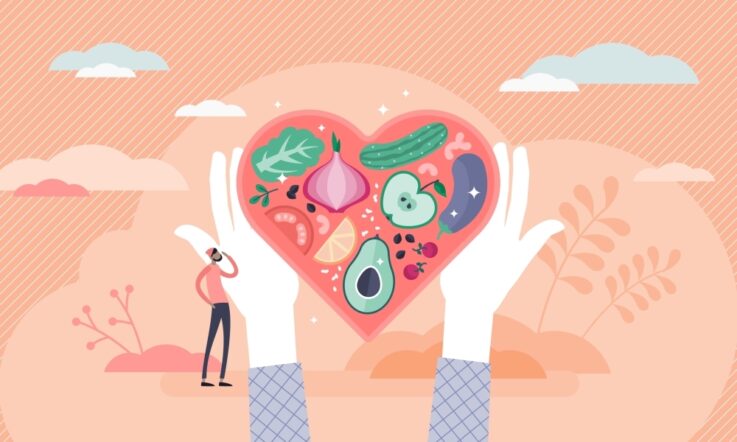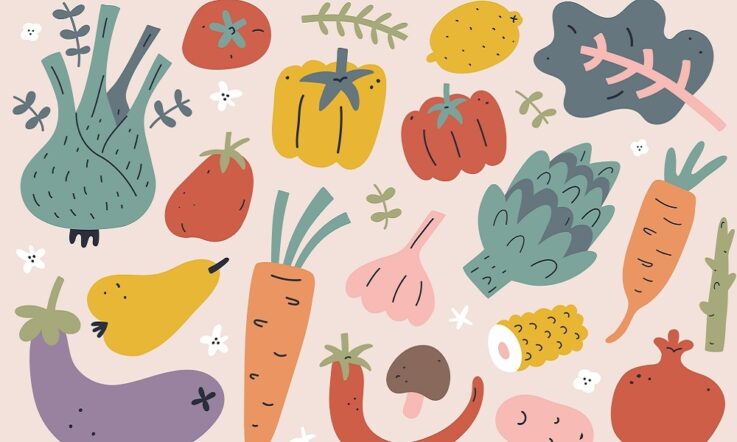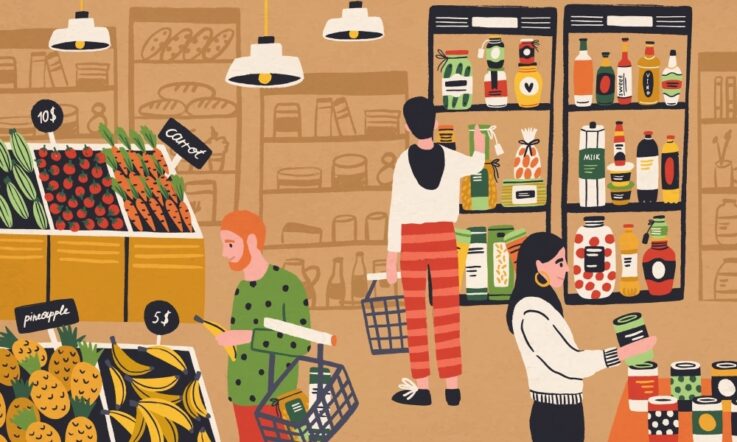How often have you found yourself searching for alternative ingredients for your favourite recipes, because items that were once staples are becoming challenging to access, or too expensive to buy?
The nutrients we get from fresh fruit, vegetables, meat and dairy are important for our everyday functioning and overall wellbeing.
Fresh fruit and vegetables in particular have recently been sensitive to supply chain issues and inflation in Australia. So, when we should be aiming to eat two serves of fruit and five serves of vegetables each day, many might be looking to switch to some more affordable alternatives.
Dr Nenad Naumovski is an Associate Professor in Food Science and Human Nutrition at the University of Canberra and says we do have some options to ensure we can reduce our grocery bills without missing out on the essential nutrients these foods provide.
Nutritional value of fruits and vegetables
‘[Fresh fruits and vegetables] provide essential nutrients, what we also call macronutrients. They also provide a number of micronutrients, vitamins and minerals,’ Naumovski tells Wellbeing by Teacher. ‘They have a number of different phytochemicals and antioxidants that are found only the in the fruits and vegetables.
‘They have enormous health benefits in humans, such as assisting with cell repair, assisting with improvement in physical capabilities, promotingbeneficial psychological aspects (such as improvement in memory, reduction in stress etc.). So, consumption of fresh fruit and vegetables has got an enormous potential for the benefit of overall human, general wellbeing.’
Paying less for fruit and vegetables
So, while it may be challenging to access fresh produce at the moment, there are some ways we can change the way we shop so we have more success.
The first strategy to keep in mind is to concentrate on purchasing fresh produce that is in season. For instance, plenty of people are foregoing lettuce in their weekly shop at the moment, and although we may not realise it, this is an example of consuming produce only when it’s in season.
‘There is no point in trying to purchase lettuce at the moment, because the lettuce is not in season,’ Naumovski says. ‘But there are a number of different options that are in season. … Purchasing something that is (first) seasonal and (second) locally grown, is definitely going to save a financial burden or expense related to the food.’
Frozen and canned fruits and vegetables
‘If you really want something – if you’ve got your eyes set on green beans, for example … recently they have reached the ridiculous prices of nearly $40 per kilogram. We can reduce that by buying the beans that are frozen.’
There is no loss in the nutritional content of frozen fruits and vegetables. ‘[If vegetables are going to be processed frozen], they’re picked, they’re processed within the 24 hours, then they’re snap frozen … they actually trap the nutrients in, and then nutrients remain relatively stable for up to 3-6 months.’
Some research is even showing that frozen produce may have a higher nutritional value than fresh produce, Naumovski shares. This is because fresh produce can be sitting on display at the shops for multiple days, or even weeks. During this time, the phytonutrients (also known as plant-based nutrients) and other vitamins are actually degrading.
‘Now people will often say, “I prefer to eat fresh fruit and vegetables” – yes, by all means, I cannot argue with that, the flavour is better with fresh fruit and vegetables. But in times like this, the frozen fruits and vegetables are definitely a good alternative from the nutritional perspective.’
Canned items can also be a good alternative, but Naumovski shares we should be aware of the added salt and sugar. To counteract this, we can rinse canned vegetables under the tap before using them to wash away the excess salt. You can also try balancing out the overall recipe by reducing any additional salt and sugar you add, so the overall levels stay roughly the same.
The role of meat and dairy in our diet
Over the past two years, red meat has been in low supply which may have led to many people removing it from their diet or cutting down on how often they eat it. Red meat, however, has some unique components that benefit our health. ‘When it is included as part of a healthy and varied diet, red meat provides a very strong and rich source of different biological components, particularly the biological value protein … which can actually be more bioavailable, which means we can absorb it and process it much better than some of the alternative food sources,’ Naumovski explains.
‘It can provide anything up to, or even over, 20 per cent of iron intake for adults. And it does provide a significant number of beneficial nutrients – vitamin A, vitamin B, iron, Zinc, magnesium – a number of different micronutrients as well.’
So, how do we approach finding alternative foods to include in our diets to replace or supplement red meat?
‘It’s really hard to actually replace the red meat on its own – but a number of different sources can include a combination of, when we’re looking from the perspective of protein, … animal food products, such as eggs, chicken meat, pork meat as well contains a high amount of protein and a high amount of iron as well,’ Naumovski says, adding that trying out meats that may not be in as high demand, such as kangaroo meat, or alternative types of meat, like liver, can be a good idea.
Dairy is another core part of many peoples’ diets, and provides other essential nutrients. ‘Dairy is one of the richest bioavailable sources of vitamin D and calcium, which means that some of the other fruits and vegetables may contain calcium, but they are not being absorbed from us as well as they would be from the dairy perspective,’ Naumovski shares.
‘I cannot emphasise more that if people are really concerned about their dietary intake, or if they have a health condition that is related to diet, to get in touch with Dietitians Australia and to look for the Accredited Practicing Dietitians for further assistance and help.’
Are you an educator working in a school setting? If so, are you interested in submitting an article for publication on Wellbeing by Teacher? We’d love to hear about how you care for your own wellbeing. Reach out to the team by emailing teacherwellbeing@acer.org with your story idea. We’ve also put together a handy guide to help you get started.





